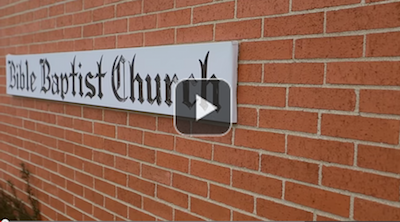JUNE 30, 2019
THE RESURRECTION OF CHRIST
INTRODUCTION:
1. John’s Gospel did not begin as did the others. Matthew, Mark, and Luke all begin with matters related to The Man Christ Jesus. (Genealogy, birth, early life, and ministry, etc.) John begins his Gospel with Christ, The Eternal Word who is God the Son without generation.
2. Yet, the Fourth Gospel concludes as did the three that precede it, with the history of the resurrection, not of the thing itself, for none of them describe how He rose, but of the proofs and evidences of it.
3. There was nothing more important to the Apostles than to have substantial proof of the Resurrection of Jesus Christ.
a) This was so because Christ Himself declared it to be the last and most compelling proof of His being the Messiah. (Matt. 12:39, 40; 16:4)
b) This was so because Christ’s whole work of redemption depended upon His resurrection. (I Cor. 15:17; Heb. 9:28, 28)
c) This was so because it was God’s purpose that by them Christ’s resurrection would be published to the world, that those might be blessed who have not seen, and yet have believed. (John 20:29)
4. This chapter contains many proofs of the resurrection.
I. THE INITIAL DISCOVERY MADE BY MARY MAGDALENE, AND THE REPORT THAT SHE MADE TO PETER AND JOHN. (VERSES 1-10)
A. MARY MAGDALENE CAME TO THE SEPULCHER TO FIND THAT THE STONE WAS ROLLED AWAY. (VERSE 1) John does not mention the other women that came with Mary Magdalene, but her only, and that was probably because she was the most active and forward in this visit to the tomb. The love for Christ was very strong in her because He had done so much for her. He had forgiven much, and she, in return, loved much. (Luke 7:47; 8:2, 3) Here again she proved the sincerity of her love.
1. She came to the sepulcher to anoint the body of Jesus with sweet spices. (See Mark 16:1) It was very early, and the women were wondering who they could get to roll away the stone from the door. (Mark 16:2, 3) Love for Christ will not be stayed because of obstacles that hinder.
2. She came as soon as possible, immediately when the Sabbath was ended, Matthew says, “As it began to dawn toward the first day of the week,” even “while it was yet dark.” She spent the day before commemorating the work of the first creation, but she was glad to leave that in order to attend to work by which we are now able to celebrate the accomplishment of the new creation, even the redemptive work of Christ.
3. She found the stone taken away, which she had seen rolled to the door of the sepulcher. This, which was a great surprise, was the beginning of a glorious discovery – the Lord was risen, though she did not as yet apprehend it as such. (This is seen in the verses following.)
B. FINDING THE STONE ROLLED AWAY, MARY HASTENED BACK TO PETER AND JOHN TO APPRISE THEM OF THE DISCOVERY. (VERSE 2) These disciples were probably lodging some place nearby, so she went immediately to them.
1. She anxiously gave the report, and then explained what she assumed had happened. She, seeing the stone removed,and having looked inside, found the grave empty.
2. This is a great mystery, even though we perhaps understand why that, not only Mary, but Peter and John and all therest, did not immediately begin to rejoice and say, “He is risen as He said.” Jesus had as often as He spoke about His death also spoke about His resurrection, but somehow it was hid from them. (See Luke 9:44, 45)
3. Their understanding will come in the same way as all others – when the risen Lord Himself opens up the Scriptures to their understanding. (See Luke 24:44-46; Rom. 10:17)
C. PETER AND JOHN IMMEDIATELY MADE HASTE AND SPRINTED TO THE TOMB, JOHN OVER-TAKING PETER TO ARRIVE FIRST. (VERSES 3, 4)
1. All of the eleven were informed. (Luke 24:9) Perhaps Mary went to Peter and John, and the other women (Luke 24:10) took the news to the other nine.
2. Only Peter and John came with Mary back to the grave.
D. PETER AND JOHN PROCEEDED TO INVESTIGATE, BUT WERE UNABLE TO IMPROVE UPON THE ORIGINAL DISCOVERY. (VERSES 5-9)
1. John went no further than Mary had gone – he stooped and looked inside. (Verse 5)
2. Peter, though he arrived last on the scene, went inside, and was able to discover some things that were not seen by the others. (Verses 6-8)
a) Peter, true to character, showed great boldness in that he feared not to go inside the tomb. Though John could out-run Peter, Peter could out-dare John. God’s gifts each one severally. May God make us both swift and strong for Him. (II Sam. 2:23)
b) Peter’s boldness produced a profitable discovery. (Verses 6b, 7)
(1) Christ left His grave clothes behind. Whatever clothes He would later be seen wearing we aren’t told, but they were not His grave clothes.
(2) This proves that the body was not taken. What grave robber would remove the linen grave clothes and lay them in place, and remove the napkin and lay it separately, in its place?
(3) When Lazarus came forth bound in grave clothes, they had to be removed so as to set him free. Jesus shed His binding clothes because it was not possible for death to hold Him. (Acts 2:24)
c) Peter’s boldness encouraged John, who, following his example, went inside the tomb. (Verses 8, 9)
(1) He saw exactly what Peter had seen, and believed.
(2) He saw and began to believe that Christ was risen from the dead. Some think that he saw, and believed what Mary had said, that someone had taken the body, but that seems very unlikely.
(3) John was not as forward as Peter about entering the tomb, but he was ahead of him in faith. Peter saw and wondered (Luke 24:12), but John saw and believed.
(4) Why were they so slow of heart to believe? (Verse 9) Here John tells us it was because they did not as yet understand the Scriptures. Christ Himself would later open their understanding. (Luke 24:45)
E. PETER AND JOHN ENQUIRED NO FURTHER, BUT INSTEAD, WENT BACK TO THEIR OWN HOMES. (VERSE 10)
1. They were at a lost what to do next. The Angel said unto them, “Why seek ye the living among the dead?” (Luke 24:5) There was no point staying at the sepulcher.
2. They no doubt reported these things to the other disciples and talked together about them. We know that later that same day Jesus appeared to them as they were assembled together. (Luke 24:33ff)
II. TWO ANGELS APPEARED TO MARY MAGDALENE AT THE SEPULCHER. (VERSES 11-13)
A. WHEN PETER AND JOHN WERE GONE, MARY STAYED AT THE TOMB.
1. Where there is true love for Christ, there will be constancy and purpose of heart to cleave to Him. Where there is true desire to know Christ, there will be constant attendance on the means of knowledge.
2. She stayed there weeping and mourning her great loss. Though the loss was only temporary; her sorrow, like that of her Lord at the tomb of Lazarus, was real.
B. THE VISION SHE HAD OF TWO ANGELS IN THE SEPULCHER. (VERSES 12, 13) Angels attended the wonderful even of the birth of the only begotten Son of God. Now they honor Him again as He is begotten again in the resurrection. (Acts 13:33; Rom. 1:4)
1. These holy angels were in white apparel sitting on the ledge where Jesus body had lain; one at the head, and the other at the feet.
a) These messengers from heaven were sent, not only to honor the Son, but to minister comfort to Christ’s disciples. (Heb. 1:14)
b) There were two, for they were to bear witness that Christ was risen.
2. They tenderly enquired into the cause of Mary’s grief. (Verse 13)
a) This was a gentle rebuke. “Why weepest thou?” Why are you not rejoicing?
b) This was done to make way for the glad tidings that would turn her sorrow into rejoicing.
3. She gave the reason for her awful grief. “Because they have taken away my Lord, and I know not where they have laid Him.” Clearly, she was not considering the possibility that He was risen.
III. THE RISEN CHRIST HIMSELF APPEARED TO MARY MAGDALENE AS SHE TALKED WITH THE ANGELS. (VERSES 14-18) Before the angels had given her any answer, the Lord Himself stepped in to satisfy her enquiries, and to dry her tears. God now speaks by His Son, and He alone can direct us to Himself.
A. NOTICE HOW CHRIST AT FIRST CONCEALED FROM HER WHO HE WAS. (VERSES 14, 15)
1. “She turned herself back.” Many believe that she turned and looked behind her because of the response of the angels to the presence of Christ.
2. The angels may have known that it was the Lord, but to Mary He was concealing His identity by appearing as a common man.
3. When He enquired of her why she was weeping, “She, supposing Him to be the gardener,” thought that perhap she had taken the body, and wanted him to take her to it so that she could retrieve it.
B. CHRIST, AT LENGTH MADE HIMSELF KNOWN TO MARY, AND COMMISSIONED HER TO BEAR THE NEWS TO HIS BRETHREN. (VERSES 16, 17)
1. He made Himself know to her by simply calling her name. He knows His sheep by name, and they know His voice. (John 10:27)
2. He spoke as Himself, and not as the gardener, and that familiar kind of loving tone was instantly recognized.
3. She turned (no doubt, quickly) and said, Raboni, that is, my Master, or my Teacher or teaching Master.
4. A further instruction He gave in Verse 17.
a) First, He headed off any familiar interaction with Him at that time. “Touch me not, for I am not yet ascended.” Later in the day he bade His disciples to touch Him. This means that His ascent to the Father occurred soon after this.
b) Second, He directed her what message to carry to His disciples. “But go to my brethren and say to them I ascend to my Father and your Father; and to my God and your God.” Two great consolations are here in these words:
(1) Our joint-relation to God resulting from our union with Christ, “…my Father, and your Father; …my God and your God.”
(2) Christ’s ascension into heaven is likewise an unspeakable comfort, because it is the further prosecution of His undertaking for us.
C. MARY MAGDALENE FAITHFULLY REPORTED OF WHAT SHE HAD SEEN AND HEARD TO THE DISCIPLES. (VERSE 18)



Speak Your Mind